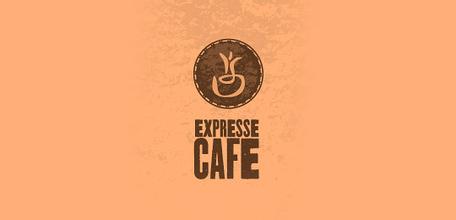The relationship between sour, sweet, salty and bitter coffee and baking
Introduction to coffee roasting
① moderate baking bitterness (chlorogenic acid lactone)
② deeply baked bitterness (vinyl catechol oligomer).
① is the so-called "authentic bitter coffee."
② is the bitterness of deep-roasted coffee such as espresso.
Therefore, medium and deep baking is an intermediate flavor between ① and ②.
The bitter taste of ① is mild, and people who are afraid of bitterness can easily accept it. If the roasting is medium and deep, even if there is such a bitter taste, some people will still think that "this coffee is not bitter at all and easy to drink." Having said that, since bitterness is bitter after all, it will still be unbearable if it is too strong.
When most of the ② is combined, it becomes a "vinyl catechol polymer" (bitter taste), which is defined here as a "bad scorched taste".
② 's vinyl catechol oligomer may be just one step away from the "bad charred smell".
The wheat flour samples with different doses of α-amylase were analyzed and tested by falling value (FN), fungal falling value (FFN), gelatinization and baking bread. By analyzing the corresponding relationship of experimental data, the range of fungal falling value was determined when the baking effect was better. Thus, in the process of adding additives, which is an important part of bread flour production, the fungal falling value can be used to control the addition amount of α-amylase, avoid insufficient addition affecting the quality of bread flour, and avoid excessive addition to increase production cost and cause waste. The experimental results show that the baking effect is better when the FFN value is in the range of 91 to 158 s, and the comprehensive baking effect is the best when the FFN value is 91 s.
"the bitterness of coffee is roughly divided into two types. That is, 'moderate baking bitterness' and 'deep baking bitterness'.
The chlorogenic acid lactone produced by chlorogenic acid is moderately baked bitterness, and the vinyl catechol polymer produced by caffeic acid is deeply baked bitter taste, which is a kind of bitterness with scorched and bitter taste. The coffee baked by moderate roasting with failed moisture removal will be very astringent, and if it is further roasted into deep roasting, it will produce a more pungent bitter taste and become a slightly stronger flavor than astringency. Therefore, is it true that everyone has taken the name of deep baking pie?
In the past, the owner of his own bakery would fry the coffee beans until they were deeply roasted. It feels like they are simply raising the baking degree to deep baking, which may be the result of their experience. If it is deep baking, at least the moisture will be removed, although there will be a little scorch and smell, but the coffee is still drinkable. Although they don't know the reason, unskilled people will do deep baking in this way.

Important Notice :
前街咖啡 FrontStreet Coffee has moved to new addredd:
FrontStreet Coffee Address: 315,Donghua East Road,GuangZhou
Tel:020 38364473
- Prev

Introduction of Variety characteristics and producing areas of Rosa Coffee Bean Flavor description in Hardman Manor, Panama
Panama Hardman Manor Rose Summer Coffee Bean Flavor description method Variety characteristics another producing area of Renacimiento Chirqui province bordering Costa Rica. This producing area is relatively small, so it is not the main producing area of Panamanian boutique coffee. Altitude: 1100-1500 m harvest time: December-March planting varieties: Tibica, Kaddura, card
- Next

The relationship between sour, sweet, salty and bitter coffee and baking
Coffee roasting introduces ① moderate roasting bitterness (chlorogenic acid lactone) and ② deep baking bitterness (vinyl catechol oligomer). ① is the so-called authentic bitterness of coffee; ② is the bitterness of deep-roasted coffee such as espresso. Therefore, medium and deep baking is an intermediate flavor between ① and ②. The bitter taste of ① is mild, and so are those who are afraid of bitterness.
Related
- Does Rose Summer choose Blue, Green or Red? Detailed explanation of Rose Summer Coffee plots and Classification in Panamanian Jade Manor
- What is the difference between the origin, producing area, processing plant, cooperative and manor of coffee beans?
- How fine does the espresso powder fit? how to grind the espresso?
- Sca coffee roasting degree color card coffee roasting degree 8 roasting color values what do you mean?
- The practice of lattes: how to make lattes at home
- Introduction to Indonesian Fine Coffee beans-- Java Coffee producing area of Indonesian Arabica Coffee
- How much will the flavor of light and medium roasted rose summer be expressed? What baking level is rose summer suitable for?
- Introduction to the characteristics of washing, sun-drying or wet-planing coffee commonly used in Mantenin, Indonesia
- Price characteristics of Arabica Coffee Bean Starbucks introduction to Manning Coffee Bean Taste producing area Variety Manor
- What is the authentic Yega flavor? What are the flavor characteristics of the really excellent Yejasuffi coffee beans?

